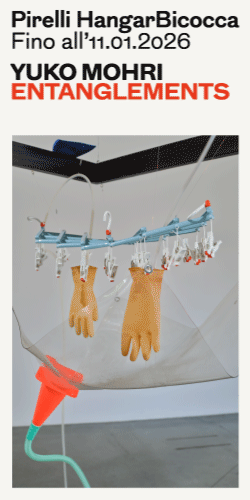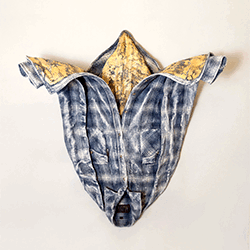[nemus_slider id=”51036″]
Here the books selection made by Humboldt Books.
Carsten Höller: “Fara Fara” – a Film Not Made
10, 6×15, 8 cm | 224 pages, color | PVC softcover, hot foil | Eng., French | € 30.00
Fara Fara means face-to-face in Lingala and is a musical phenomenon deeply rooted in Congolese culture. Two groups play at the same time at adjacent locations, and the ones who play longest win. In times gone by, disputes were sometimes settled in this way; nowadays, it is more about musical leadership. A Fara Fara is a massive event attracting huge crowds, but it happens very rarely. This book is about a film where a Fara Fara takes place in Kinshasa, a musical battle between the two major proponents of Congolese contemporary rumba. The film has not been made yet. It will be directed by the artist Carsten Höller and the film director Måns Månsson.
The book contains photographs taken during various preparatory trips, made since 2001 by Pierre Björk, Hoyte van Hoytema, Reed Kram, Armin Linke, Giovanna Silva, Patrik Strömdahl and the directors. The Swedish writer and music cognoscente Elin Unnes provided the text.
Fara Fara vuol dire “faccia a faccia” in Lingala ed è un fenomeno musicale profondamente radicato nella cultura congolese. Due gruppi suonano contemporaneamente, l’uno accanto all’altro, e quello che riesce a suonare più a lungo vince. Un tempo questo era uno dei modi con cui a volte si risolvevano le dispute; oggi riguarda più la questione di ottenere il comando musicale. Il Fara Fara è un evento imponente che attira grandi folle, ma è raro che accada. Questo libro racconta di un film su un Fara Fara che ha luogo a Kinshasa, una battaglia musicale fra i due più grandi esponenti della rumba congolese contemporanea. Il film non è stato ancora realizzato. Sarà diretto dall’artista Carsten Höller e dal regista Måns Månsson. Il libro contiene foto scattate a partire dal 2001 durante i numerosi viaggi di preparazione fatti da Pierre Björk, Hoyte van Hoytema, Reed Kram, Armin Linke, Giovanna Silva, Patrik Strömdahl e dai registi. La scrittrice svedese ed esperta di musica Elin Unnes ha scritto i testi.

Francesca Berardi: Detour in Detroit
17×21 cm | 288 pages | 32 photographs, colour, 64 b/w Softcover | Eng. | € 23, 00
Between February 2013 and November 2014 I visited Detroit six times, for a total of 77 days. After three years living in Brooklyn, I found in Detroit what I had been looking for when I left Italy and crossed the Atlantic Ocean. Space, both physical and for the imag- ination. That is why it only took me two days to decide to write my first book. An emotional and practical book about the city, mapped through a series of encounters with its people. I raised the money needed to start the project, managed to drive an automatic car and learned how to fix a bike tire. Over the course of two years I have collected stories, ideas and feelings, set within what seems to be a real movement of urban resistance. I trained my eye to observe si- lent urban landscapes, on which huge blocks of sky and abandoned buildings impose themselves, and I realized that fear and fascina- tion for decay quickly take second place. It has been like developing a way of seeing that is more like a way of listening, toward a world which can be complex and harsh at times, but also full of an energy that only appears when determination and potential meet. I invited an artist, Antonio Rovaldi, to join me and illustrate this journey. This is the result of our work. (F.B.)
Dal febbraio del 2013 al novembre 2014 ho visitato Detroit sei volte, per un totale di 77 giorni. Dopo tre anni trascorsi a Brooklyn, ho trovato a Detroit cosa cercavo quando ho attraversato l’Atlantico per la prima volta: spazio, sia fisico che per l’immaginazione. Mi sono bastati due giorni per decidere di scrivere il mio primo libro. Un lavoro dettato da necessità pratiche ed emozionali, che parla della città attraverso una serie di incontri con i suoi abitanti. Nel corso di due anni ho raccolto storie, idee e visioni, in un contesto che saprei definire solo come un “movimento di resistenza urbana”. Ho allenato i miei occhi a un paesaggio abbandonato, dove si alternano grandi blocchi di rovine e di cielo, e ho scoperto che la paura e la fascinazione per la decadenza scivolano presto in un secondo piano. Diventano lo strato di fondo su cui mettere alla prova un più attento grado della visione, uno sguardo più simile all’ascolto, capace di sentire l’energia che si genera quando determinazione e potenziale si incontrano. Ho chiesto a un artista, Antonio Rovaldi, di accompagnarmi e illustrare questo viaggio. Questo è il risultato del nostro lavoro. (F.B.)

Francesco Jodice: AMERICAN RECORDINGS
16, 6×22 cm | 160 pages, color | Soft cover | Ita. | € 20.00
In AMERICAN RECORDINGS Francesco Jodice narrates the 20 th century as the “American century” that has shaped the collective imaginary of multiple generations. Jodice has transposed the film of the same title into a book, a symphony that traces back through the myths and heroes made in USA, reflecting on the power of images in the formation of cultural processes.
In AMERICAN RECORDINGS Francesco Jodice racconta il Novecento come il “secolo americano” che ha plasmato l’immaginario collettivo di più generazioni. Jodice traspone in un libro l’omonima opera filmica, una sinfonia che percorre miti ed eroi made in USA e che riflette sul potere delle immagini nella formazione dei processi culturali.

Gabriele Basilico, Iran 1970. Texts by Luca Doninelli, Gabriele Basilico, Giovanna Calvenzi
17×21 cm | 80 pages + booklet inside flap Softcover | Ita., Eng. | € 18.00
In the summer of 1970, Gabriele Basilico set off from Milan in a Fiat 124, nominally heading for Kabul. The journey towards India was a rite of passage for the flower children generation, and Basilico had plans to take a series of photos to then sell on to some magazine. The journey didn’t quite turn out as planned, but in his personal archive, those shots were carefully stored away, and on more than one occasion, the Milanese photographer thought about turning them into a book. As Luca Doninelli writes in the introduction, this is “Basilico pre-Basilico”, a reportage stretching from Yugoslavia through to Turkey and Iran – which turned out to be the final destination of the trip – in which we may note the inklings of his vocation-to-be. The afterword by Giovanna Calvenzi, Gabriele’s travelling companion on that journey, tells the story of that adventure in an era of unprecedented freedom.
Nell’estate 1970 Gabriele Basilico parte da Milano con una Fiat 124, ipotetica destinazione Kabul. È il viaggio iniziatico della generazione dei figli dei fiori, la strada verso l’India, e Basilico ha intenzione di realizzare una serie di foto da vendere a qualche rivista. Il progetto non giungerà a compimento, ma nell’archivio personale quegli scatti furono accuratamente custoditi e il fotografo milanese pensò qualche volta di farci un libro. Come scrive Luca Doninelli nell’introduzione è un “Basilico prima di Basilico”, il reportage tra Jugoslavia, Turchia e Iran – che sarà la meta del viaggio – nel quale si colgono i segni della nascita di una vocazione. La postfazione di Giovanna Calvenzi, compagna di Gabriele e testimone di quel viaggio, racconta questa avventura e un’epoca di grande libertà.

Mario Bellini, USA 1972. Texts by Mario Bellini, Mario Calabresi, Gianluigi Ricuperati
17x21cm | 168 pages + booklet inside flap 136 photographs | Ita., Eng. | € 24.00
In June 1972, Mario Bellini arrived in New York to take part in ‘Italy, the New Domestic Landscape’, the MoMA exhibition where he was to present his ‘Kar- a-sutra’, the very first MPV, a revolutionary space-mobile. Once the show was over, Bellini set off on a journey-cum-enquiry into the American way of living. He was accompanied by Francesco Binfaré, Davide Mosconi and a ‘safe- conduct’ issued by the MoMA which was to open many doors: those of Andy Warhol’s studio in New York, of Hugh Hefner’s Mansion in Chicago, and of Beverly Hills villas occupied by hippies. Bellini plotted his itinerary day by day, moving among the Mormons of Salt Lake City, the utopia of Arcosanti, and villages of mobile homes along the roads of the Midwest. His Hasselblad was to record the dreams and hopes of an unexpected America, one which perhaps no longer exists.
Nel giugno 1972 Mario Bellini arriva a New York per partecipare a Italy, the New Domestic Landscape, la mostra del MoMA nella quale presenta “Kar-a- sutra”, la prima monovolume, un progetto rivoluzionario di spazio-mobile. Terminata la mostra, Bellini parte per un viaggio-inchiesta sul modo di abitare degli americani. Lo accompagnano Francesco Binfaré, Davide Mosconi e un “salvacondotto” del MoMA che gli apre tutte le porte: lo studio di Andy Warhol a New York, la Mansion di Hugh Hefner a Chicago, le ville di Beverly Hills occupate dagli hippies. Bellini inventa il suo itinerario giorno per giorno, procede tra i mormoni di Salt Lake City, nell’utopia di Arcosanti, tra villaggi di mobile homes sulle strade del Midwest. La sua Hasselblad registra sogni e speranze di un’America inaspettata e che, forse, non esiste più.

Susan Philipsz: Follow Me
13, 6×19, 6 cm | 144 pages, color Hardcover, silkscreen English | € 25.00
Follow Me is a book created for the exhibition by Susan Philipsz in the city of Genoa. Designed on the basis of a contemporary Baedeker, this book offers an original itinerary in the city, read through the work of the Scottish artist, invited by the Museum of Villa Croce in conceiving an exhi- bition inside the historic center of the city. The book is thus a city-guide that links different places and times, and that also moves from the habit of moving, investigated as a typical phenomenon of the Grand Tour – and that is the origin of the term “tourism”.
Follow Me è un libro realizzato in occasione della mostra personale di Susan Philipsz nella città di Genova. Concepito sulla scorta di un Baedeker contemporaneo, il volume presenta un inedito itinerario della città di Genova, letta attraverso il lavori dell’artista scozzese, invitata dal Museo di Villa Croce a concepire una mostra personale all’interno del centro storico della città. Il libro è una guida della città che lega luoghi e tempi diversi e che muove anche dall’abitudine a spostarsi, indagato come fenomeno tipico del Grand Tour – e che è all’origine del termine stesso “turismo”.









